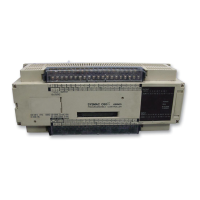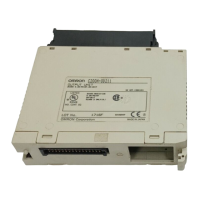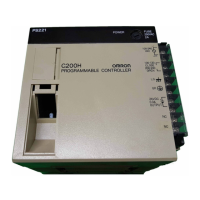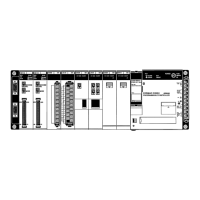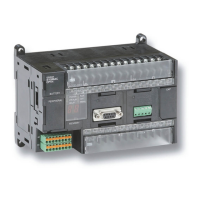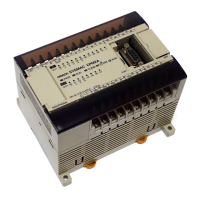121
0002
0000
0001
ILC(03)
IL(02)
0004
IL(02)
0006
0005
0003
0500
0501
0502
0503
Address Instruction Data
0000 LD 0000
0001 IL(02) ––
0002 LD 0001
0003 OUT 0200
0004 LD 0002
0005 IL(02) ––
0006 LD 0003
0007 AND NOT 0004
0008 OUT 0201
0009 LD 0005
0010 OUT 0202
0011 LD 0006
0012 OUT 0203
0013 ILC(03) ––
When you have finished coding the program, make sure you have placed
END(01) at the last address.
7–3 The Programming Console
Depending on the model of Programming Console used, it is either con-
nected to the CPU via a Programming Console Adapter and Connecting Ca-
ble or it is mounted directly to the CPU. Refer to the
Programming Console
Operation Guide
for details.
7–3–1 The Keyboard
The keyboard of the Programming Console is functionally divided by key
color into the following four areas:
The ten white keys are used to input numeric program data such as program
addresses, data area addresses, and operand values. The numeric keys are
also used in combination with the function key (FUN) to enter instructions
with function codes.
The CLR key clears the display and cancels current Programming Console
operations. It is also used when you key in the password at the beginning of
END(01)
White Numeric Keys
Red CLR Key
The Programming Console Section 7–3
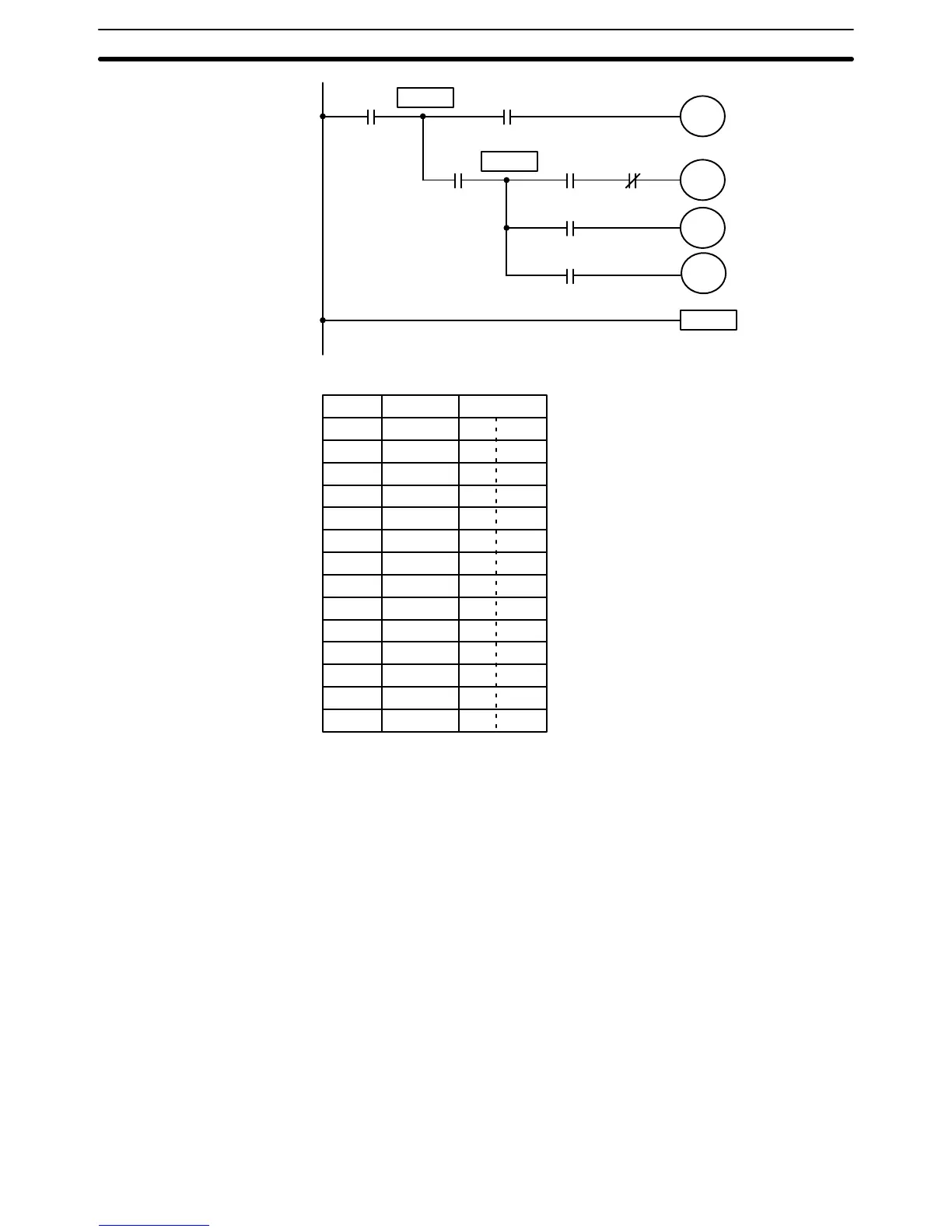